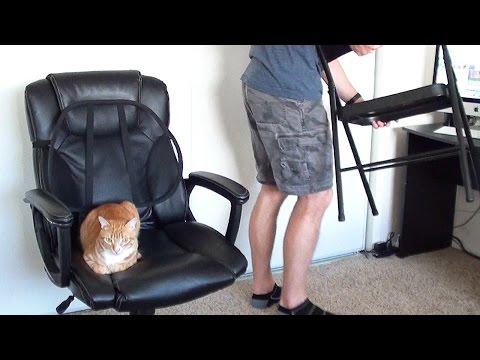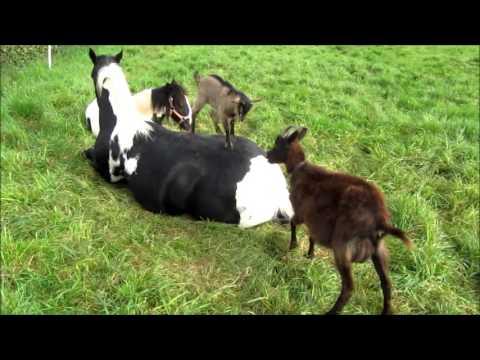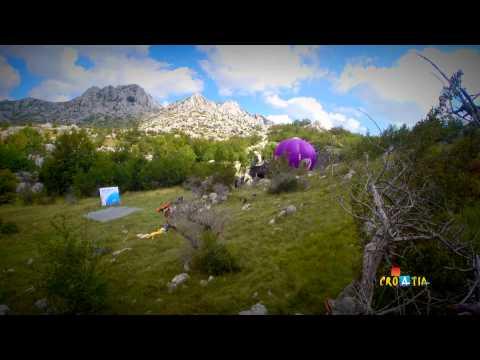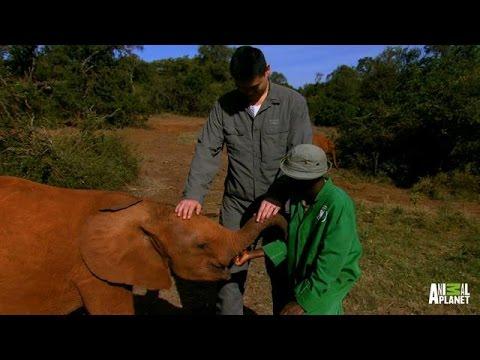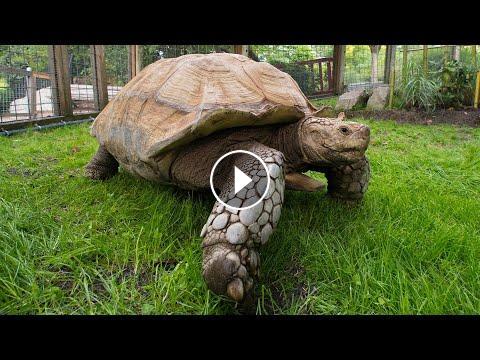Today we’re meeting Dozer, the tortally awesome the African spurred tortoise!
Video Script::
all right hi Shelly hi everyone welcome to organs alive my name is Shelly and I'm here today to introduce you to my favorite reptile here at the zoo this is dozer the african spur-thighed tortoise so I just want to take a minute to thank everyone for their support during these times we really miss having our guests around but I hope that I can answer all your questions about dozer and I hope once we get open again you guys can come see him in person alright so Elle and David are asking how old is dozer Elle and David dozer is about 30 years old I don't know exact age but based on his size and his weight and how long he's been in the zoo world we know he's about 30 years old so Seth is asking how fast he can swim can tortoises swim I actually said tortoises are not that great in the water as you can see dozers pretty big and bulky and heavy and if you can imagine that wouldn't make him such a great swimmer so the yeah he's a good pusher too so what you're thinking of is turtles so turtles are the guys that are great swimmers they're aquatic and dozer he likes to spend his time on land and his feet are actually made for digging and not swimming so Joey can you tell us a little bit more about the difference between tortoises and turtles I would love to so the difference is between turtles and tortoises are known to be land-based right so you're gonna find them they've got big giant feet like this that are made for digging and cruising around on the land turtles like Western pond turtles here in Oregon and sea turtles those guys are built and equipped for swimming with their flippers and the way and their shells so Jordans asking about the shell how hard is those are shells so it's pretty hard and believe it or not this shell is actually made of the same stuff as your fingernails keratin so it's just really thick but believe it or not there are nerve endings all in the shell and tortoises and turtles can actually feel you touching their shell so this does tortoise those are like to get miss I think that he does he also really enjoys getting a good scrub in the summer when it's hot and getting to play in the hose and the sprinklers just like you guys so Lewis is asking about the shell on the bottom can you tell us what the shell on the top and the shell on the bottom are called you bet so with a turtle and a tortoise the top of the show is called the carapace and the bottom of the shell is actually called the plaster on so and actually when you flip it tortoise over that's a really good way to tell between a boy and a girl dozers a little bit too big and heavy to be able to just flip them over for you to show you but I promise you dozer is a boy so Jocelyn's asking what does those are eating how much does he excellent question Jocelyn so dozer loves his leafy greens so as you can see I've been pulling a lot of different greens out of the bucket here it looks like on the menu today we have collard greens romaine lettuce bok choy there's even some cabbage in there and these guys get about a little over a pound of this stuff two times a day and then they always have access to hay which they like to eat grasses as well and dozers not picky he'll even eat part of his yard Brooks asking what's his favorite tree uh so one of my favorite days actually is when dozer gets a pumpkin dozer loves pumpkin so much that he will actually roll it around play with it for a while then he'll break it open and he'll eat the entire thing Kilian who wants to know how big will he get hey Killian so right now joes are is a hundred and seventy eight pounds and believe it or not that is not actually full-grown yet the mail sulcata tortoise is can actually get to be 200 even more than that pounds so we expect dozer to keep growing so Silas is asking what does his bed look like where does where does dozer sleep hey Silas so dozer actually sleeps inside he has an indoor barn area which we keep nice and warm and hot for him during the cold winter days he will take naps outside but during the evening time he goes into his barn and he sleeps in there so we had a question where does the those our species come from in the wild and can you tell us again what type of tortoise he is yes so dozer is an African spurred tortoise some people call them socata tortoises these guys are native to Africa around the Sahara region they live sort of just outside the Sahara where the grasslands are because you can see they like to eat the green so they're not going to find that actually in the desert so they hang out in the southern region of the Sahara where there's grasslands and thanks for them to eat Stephanie's asking how fast can those are move what's his top speed top speed for dozer well as you can imagine with that big giant shell that's over half of his body weight he's going to move pretty slow but if we can get him to finish his piece of lettuce here maybe we can back up and I can try to show you guys dozers top speed so while we're waiting Beckham wants to know can can those are actually retract into his shell can he go inside his shell so his hat can go pretty far inside of his shell but not so much his limbs as they get bigger they sort of lose the ability to pull themselves all the way in all right let's go top speed dozer come on show him how it's done so his head can go pretty far but for the most part it's just his head the rest of microrna just hangs out a little bit nope Riley's asking if dozer can bite so of course dozer can bite he has a mouth right so anything that has a mouth can actually bite you but however dozer doesn't have teeth but that doesn't mean that his bite wouldn't hurt so I try to keep my hands away from his mouth and be very careful while I'm feeding him but for the most part tortoises when they're going after you they don't try to bite you instead they try to knock you over so she okay tell us a little bit about other tortoises that live here in North America sure so there's about three over 300 species of turtles and tortoises worldwide we actually have about 57 of those here in Oregon and some of the tortoises that you're going to find in the United States our gopher tortoises we have desert tortoises ornate box tortoises but for the most part we have more species of turtles here in the US than we do tortoises Christian is asking does he eat dandelions he does eat dandelions it's another one of those treats that we like to give him so pretty much if you'll notice not a single dandelion or weed in this tortoise yard thanks to the tortoises so Karger is asking they might have missed this before what is this shell made out of hey Carter so his shells just like your fingernail is actually made out of keratin and a cool thing about sulcata shells is they actually show grow rings so each one of these little rings that you see on dozer shell kind of like a tree shows you every time that his shell grew it's sort of like a growth ring is what they call it so how old can this species of tortoise get so there's a lot of conflicting views about that I've seen 70 years I've seen 80 I've seen 150 so we're going to go in the middle of all of that and say probably at least a hundred years old Jack wants to know just doesn't like to play dozer does like to play believe it or not if you take a look I'll go get it they like to roll balls around in the yard so he'll knock that around kind of play soccer with it we have a hanging theater toy over there and I think for fun he likes to chase his keepers around the yard so Stephanie's asking do they meet or just greens they do not eat meat they are strictly herbivores so that's why we have all these awesome leafy greens I got some carrots in there and we also give them apple but only every once in a while because an apple like them it's kind of like a piece of candy lots of sugar in it so they only get that very rarely as a treat so Shirley Howard tortoise is doing in the wild well these guys believe it or not are actually doing very well and the reason for that is because they actually about 20 years ago became very popular in the pet trade and unfortunately I think a lot of people when they got a tortoise they didn't realize when they got a tortoise that used to fit in your hand that it was going to turn into some like this so actually there's a lot of so kind of tortoises out there that need homes because a lot of people got them as a pet not expecting what they were going to get so lets Okada's they are actually not endangered so while we're on the topic of pets tanya is asking do they make good pets and if somebody's considering a tortoise what are some of the special considerations thank you for asking that Tanya so some people absolutely have socata tortoises as pets the one thing that you really need to know is not only because they could live up to a hundred years but just the sheer size of this animal makes it so you have to have a lot of complex room for them in your yard they have to have barns you have to be able to go inside they have to stay warm so it's not only caring for them when they're little and cute but it's also caring for them their whole entire life and especially when they get big like this so Ryan's asking does he have teeth he does not have teeth they refer to his mouth like a beak sort of like a bird beak so even though he doesn't have teeth that mouth actually has awesome crunching power as you can hear and see so I would keep your fingers away from that part so those are really big tortoise are there any other tortoises that get even bigger yes he is so Jose are species of tortoise is actually the third largest species of tortoise in the world the only two other tortoises that are bigger than dozer are the Aldabra tortoises and the galapagos tortoise we have some folks asking where did those are come from so Jose are like a lot of reptiles that end up in zoos has a very interesting past all I can tell you from what I know is that US Fish and Wildlife Service actually got a hold of dozer back in 1996 in Texas he lived a very long time in another zoo in New York and we actually got him here at the Oregon Zoo back in 2015 so he's been here five years now so what's it like to care for a tortoise like dozer so that definitely well it's a lot of fun as you can see but I wouldn't be able to do it at home because I don't have all the things that dozer needs at home but I do have them here at the zoo so doser needs a big building to sleep in we have to make sure that building is always at least 70 degrees he also has to have Sun lamps if he can't go outside and get Sun because here in Portland it's cloudy a lot he has to go inside and be able to use his Sun bulbs and those are actually really expensive so it takes a lot to care oh and a lot of food right so like I said some people have a miss pett to do a great job but for the most part I would say that the best place to go and check out and have a tortoise like this is at your local zoo Adria is asking does he burrow he does burrow great question so as you know like I said these guys are actually from Africa and in Africa in the summer time it gets so hot over 120 degrees and there's nothing to eat and so what these guys will do is they will actually dig a hole anywhere up to ten feet deep and sort of hang out and burrow for months at a time they can go weeks months without food or water and they wait for the rainy season to come back because the rainy season means greens to eat and water to drink and then they'll come out of hibernation so London is asking what is his shelf for so great question so his shell is actually part of his whole body so a lot of people think that turtles or tortoises can actually come out of their show that's not true it's actually attached to his spine and his rib cage and his shell is actually what's keeping all of his insides in there and together it's also protection right so if you're big and you're slow-moving it's hard to get away from predators so the best way to protect yourself is a giant suit of armor Julie's asking do these tortoises live in the woods what sort of habitats do they like hey Julie sure so not actually the woods so you guys can find these guys out in the desert area so they live in like the rocky grassland savanna type things where you're going to find a little bit of few rocky outcrops see outcroppings shrubs bushes weeds things like that but not in the forest so so for the folks who might have missed this before there's a there's a couple questions how fast does he move so not very fast but I have heard before when people have seen him that they say he moves faster than they expect did so but he gets really concentrated on his pile of food we're probably not gonna be able to move maybe after he's done we can get a shot of him moving around so we had a question about this piece of his shell that's right below his neck what is that for so this is part of his plaster on that actually right there believe it or not one way is a good way to tell that he's a male because of how long it is and actually he uses that sort of to defend himself and fight off other tortoises or predators so Logan in a couple of other people missed this question how old is he and how long do they live gotcha so Logan Jojo right now is about 30 years old he's weighing in at a hundred and seventy eight pounds I would guess that dozer will live to be about a hundred years old and probably by that time he'll weigh close to 250 pounds so surely what are some ways people can help tortoises there's some some species of tortoises are in trouble in the wild absolutely so like a lot of other species a good thing to know about is taking care of your environment right so we got to make sure that we're keeping our water clean and our land free of pollution you have to watch the kind of pets that you get and who you're putting out into the wild believe it or not tortoises and turtles are actually very important part of the ecosystem you wouldn't really know it but they're scavengers they help germinate and Paulette Paulette seeds so these guys believe it or not just because they're big and bulky they actually do a lot of good for the environment Oh Beckham's asking houses I say as I say it's actually pretty good I feel like dozer can see me coming from a long way away or he sees the food bucket but either way so he's got pretty good eyesight and it's hope you're doing okay pretty good eyesight and we're gonna try to get him to get moving so you guys who are asking about his speed can see him go all right come on dozer let's go also if you have a hundred and seventy eight pound animal you can't really make them do what they don't want to do so we'll let him just go back to eating and you guys are just gonna have to come to the zoo when it opens and see how fast he can actually move mollies asking if he somehow got flipped over would he be able to write himself yes Marley he actually would so it is tortoise shells are actually designed so in case that does happen which it does they're actually designed so they can get themselves flip back over I know there are probably instances where that doesn't happen but I would say nine times out of ten if a tortoise or turtle gets flipped over they can get themselves write it again billing and Addison are asking how many eggs do they lay well Dylan Edison good question so the females actually will nest a couple times a year and can lay anywhere from about fifteen to thirty eggs at one time and we had a question about tortoise predators what what sort of animals would prey on tortoises well if you take a look at dozer you got to be really hungry to want to eat that guy right so they're probably most vulnerable when they're little so when dozer was born believe it or not he would fit in the palm of your hand that's how small he was and he's that small that's when you have to worry about predators right Birds hyenas things like that who were gonna eat him at this point and at this stage in his life like I said there's not a lot of predators out there because think about how hard it would be to get to this meal we had a question about how long he is how long um I would say he's probably I'm terrible at measuring he's probably about two and a half feet two feet right now as he gets older and grows so he'll grow his entire life they continue to get bigger he'll probably be about three feet and gain probably another fifty pounds so we'll take one last question from Zee Ziva alright Deva does he make any sounds he does make some sound so believe it or not he just sort of like a hissing sound sometimes when he gets excited or he gets too involved in his food he also can make grunting sounds believe it or not well this has been great thanks for hanging out with us in dozer Shelly yeah thanks you guys so much for coming it's been a great time and we hope to see you next time alright bye-bye dozer
- Category
- Pets And Animals
- Tags
- Oregon Zoo, african spurred tortoise, tortoise, dozer, sulcata tortoise





